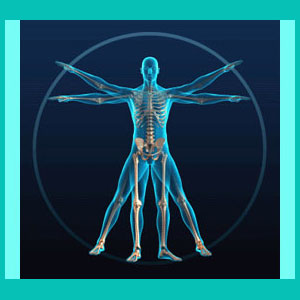
Herniated disc exercises are widely prescribed by orthopedists, chiropractors and physical therapists. Exercise is a crucial part of a healthy lifestyle and is advised for almost everyone as part of a general health maintenance program. However, exercise is certainly not a cure for a herniated disc, although many patients do enjoy some symptomatic relief from vigorous physical activity.
This resource section contains an analysis of the use of specific exercises as dedicated herniated disc therapies. We will explore a variety of physical activities and how each might be utilized as part of a back or neck pain treatment plan.
What Are Herniated Disc Exercises?
Exercises prescribed for painful disc conditions are typically designed to work the core and postural muscles of the body. These muscles are very strong, but many care providers think that strengthening them more will help relieve the pain of a disc pathology. This theory makes little anatomical sense, yet exercise has still proven itself very useful for many patients.
Exercises will not rebuild a degenerated disc or repair a disc herniation. So why do so many affected patients enjoy some measure of relief from targeted physical activity? The answer to this question is deeply tied to one of the overall problems associated with treating herniated discs: misdiagnosis.
Examples of Herniated Disc Exercises
Learn all about the various recommended forms of exercise therapy for herniated discs in the essays listed below:
Herniated disc stretches are used in many different activities as a warm-up or as a means of increasing overall flexibility.
Yoga for herniated discs is a beautiful mindbody practice that might help relieve some forms of back and neck pain.
Swimming for herniated discs is my own personal savior. Swimming has done more to reduce the severity of my pain than any other treatment I have ever tried.
Pilates for herniated discs works the core muscles of the body and may help ameliorate disc pain.
Tai chi for herniated discs utilizes ancient martial arts motions for a gentle workout.
Tennis with a herniated disc can be a difficult proposition, since the sport is strenuous and might exacerbate many existing disc problems.
Herniated disc golf is another activity that may lead to increase symptomology in some patients.
Running with a herniated disc can aggravate pain for many people, but might also help some patients to find symptomatic respite.
Walking for herniated discs is a low impact exercise that can be performed anywhere, but virtually any patient.
Herniated disc weight lifting is one of the highest risk pastimes, but resistance training does promote excellent anatomical health in many ways.
Weight loss for a herniated disc can only help any patient to lighten the load on their sensitive spine.
Herniated disc rehabilitation is used after injury or surgery to restore patients back to normal physical functionality.
Herniated discs in athletes might pose special difficulties for recovery, but not due to the reasons one might suspect.
It might take special care, but bowling with a herniated disc is certainly possible.
Bulging Disc Exercise Facts
The anatomical implications of herniated discs will not improve due to exercise therapy. The spinal structure will not change due to exercise. Strengthening the core muscles will not help to reduce pain due to a herniated disc. These facts are all true and seem contraindicative to using exercise as a treatment option for disc conditions. However, many patients do report good temporary pain relief offered by exercise therapy. How and why does this occur?
Exercise, in this case, does not enact any pain relief through building muscle, supporting the spine or increasing flexibility. Instead, exercise improves circulation and increases cellular oxygenation at the painful site. This directly fights off pain due to ischemia, which is one of the more prevalent causes of chronic back pain which is often mistakenly blamed on a disc condition. In fact, a large percentage of herniated disc pain syndromes are completely misdiagnosed. Yes, the herniation exists, but no, it is not the actual cause of pain. Oxygen deprivation is the real culprit and hence the positive results offered by exercise therapy.
In other cases, some localized or widespread soft tissue pain syndrome may actually be the source of pain. These may range from muscular imbalances and injuries to fibromyalgia and from tendonitis to thoracic outlet syndrome to piriformis syndrome. Exercise may hold benefits for all these soft tissue diagnoses.
Recommendations on Exercises for Herniated Discs
While it is terrific to use exercise to get in shape and take care of your body, it is not a good treatment solution for a herniated disc which is definitively compressing some neurological tissue in the spinal canal. Exercise will hold absolutely no benefit for these types of structural concerns. Far better is the idea of determining the root cause of the pain and dealing with that issue with a treatment modality which will permanently resolve the source of the symptoms.
For verified nerve pain due to a herniated disc, spinal decompression may be the ideal therapy choice.
For the majority of patients who are actually suffering from ischemia-based mindbody pain, knowledge therapy is the preferred path.
I am an outspoken advocate of exercise therapy for rehabilitation of back and spine injuries and to assist patients in regaining their functionality after long periods of inactivity. I just do not endorse it as a pain management technique for disc conditions. My advice is to solve your disc pain problem once and for all and then use exercise as an enjoyable and vital part of a healthy and pain-free life.
It is worth mentioning, in summary, that herniated disc exercises, in the form of physical therapy, are usually recommended for disc pain sufferers in an effort to build a paper trail of failed treatments. Doctors know that PT will likely prove fruitless for chronic pain and so they can build evidence which will convince insurance carriers to cover the major surgical events which subsequently follow most regimens of unsuccessful conservative care. Besides, the exercise therapy itself is very profitable and after surgery, the patient will require it once again to rehabilitate themselves postoperatively. What a money-making concept.
If you are looking for a great, simple and effective herniated disc exercise program, be sure to read our Back Exercises and Stretches book. It is just a small part of our peer-acclaimed and highly effective pain relief program.
Herniated Disc > Herniated Disc Exercises






